Clancy Tucker's Blog, page 204
November 25, 2016
26 November 2016 - GARTH BROOKS

GARTH BROOKS
G'day folks,
I'm pleased to present a great country singer from the USA. Troyal Garth Brooks, is an American country pop singer and songwriter. His integration of pop and rock and roll elements into the country genre through multi-platinum recordings and record-breaking live shows.
Garth Brooks is as responsible as any one musician for the sound known as modern country. Never a favorite among discerning music snobs (and particularly not during the phase of his career when he inexplicably assumed the identity of glam rocker Chris Gaines), Brooks nonetheless achieved a level of mainstream commercial success theretofore unseen in his genre—or any other, for that matter. Taking country music from the pickup trucks and dirt roads south of the Mason-Dixon Line into the suburban living rooms of Yankees everywhere, his accessible themes, lovelorn honk, and lite-FM rock riffs nationalized country music.

The Tulsa-born Brooks excelled as an athlete in high school and earned a track scholarship to Oklahoma State University. He competed in javelin and graduated with a degree in advertising in 1984. Though Brooks enjoyed country music, his first love was sensitive singer-songwriter soft rock like James Taylor and Dan Fogelberg. This influence would serve him well when he moved to Nashville in search of fame.
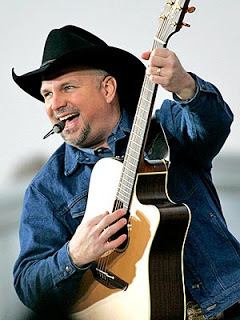
He would find it quickly with his self-titled debut in 1989. The album reached #2 on the country charts and 13th on Billboard,launching the most successful country album career in history. The following year’s No Fencesspent 23 consecutive weeks at #1 on the country charts and peaked at #3 on the pop charts. The next year, Ropin’ in the Wind became the first country album to debut at #1 on the country charts.
In three short years, Brooks was a household name. His trademark headset microphone and slickly produced stage show outfitted country music’s blue collar anthems and patriotism with arena rock panache and ambition. Brooks joined the storied Grand Ole Opry in 1990 and carried country music into a new stratosphere of sales, in the process driving the Nashville sound to something more closely resembling arena rock acts like Bruce Springsteen and Billy Joel than Hank Williams.
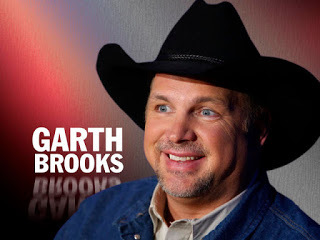
Brooks is a Country Music Hall of Famer, winner of two Grammys, and recipient of 17 American Music Awards, including recognition as “Artist of the ‘90s.” This title is well-deserved, as nobody has sold more than Brooks’s 70 million records since 1989. He is only surpassed on the all-time list by the Beatles and Elvis Presley.

Clancy's comment: I'm not a fan of all country music, but I do like this guy.
I'm ...

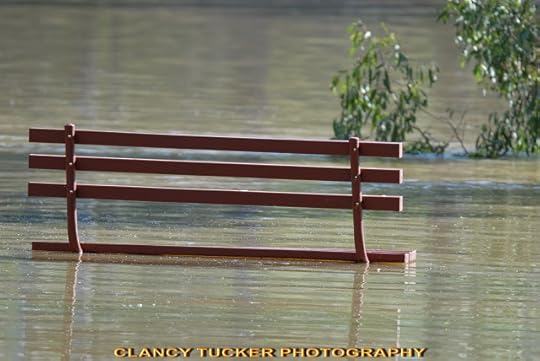
Published on November 25, 2016 13:43
November 24, 2016
25 November 2016 - CATHY FREEMAN - Australian Champion

CATHY FREEMAN- Australian Champion -
G'day folks,
Catherine Astrid Salome "Cathy" Freeman, OAM is an Australian former sprinter, who specialised in the 400 metres event. She would occasionally compete in other track events, but 400m was her main event. Here are some interesting facts on one of our best Aboriginal athletes.
Cathy Freeman burst into the Olympic spotlight at the 1996 Games - the first Aboriginal athlete to represent Australia. She competed in her first race at the tender age of six. Freeman became involved in athletics because she enjoyed running and winning races. Freeman has definitely proved that she is a winner on the track time and time again. Her youth involved running twelve laps barefoot around a grassy track on a regular basis. Freeman's mother used to encourage her to write out "I am the world's greatest athlete", an affirmation which was to ring true some years later. When she was thirteen years of age, Freeman told her school guidance counsellor that her vocational plan was to win an Olympic Gold. She won gold at the Commonwealth Games as part of the 4x100m relay team at the age of sixteen. In 1990, she was awarded the title of Young Australian of the Year and the following year she was awarded Aboriginal Athlete of the Year.

Name: CATHY FREEMAN
Date of Birth: 16/2/1973
Place of Birth: Mackay, Australia
Height: 164 cm
Residence: Melbourne, Australia
Occupation: Athlete
Club: MTC Events: 100m, 200m, 400m
Training Regime: Trains twice daily (except on Sundays); with her full-rest day on Saturdays
STATS: 100m / 11.24
200m / 22.25
400m / 48.63

Interests/Hobbies: Horse-riding, dancing, travelling, spending time with family and friends.
Describe yourself in five words: Honest, free-spirited, determined, courageous, loving
Greatest influence on her career: Parents
Role models: Raelene Boyle, Carl Lewis, Flo-Jo
Most memorable athletic meet: 1996 Atlanta Olympics
Best aspect about being an athlete: The general well-being especially physically which results in a high self esteem; travelling aspect is also fantastic.
Your dream career outside athletics: To be in an influential position in the media/TV industry
Pet-hates: Injustices, war and lack of respect for other people.

An important lesson life has taught you: Life is what you make of it!Fave Sport (besides athletics): AFL Football
Fave Food: Pasta, Japanese, Italian, Mexican, Seafood
Fave Smell: Red Roses
Fave Holiday Destination: Broome, Western Australia
Fave Band(s): Live, Savage Garden, Midnight Oil, Hoodoo Gurus
Fave Athletic Track: Monte Carlo
Freeman became the idol of all Australians when she won double gold at the Commonwealth Games in the 200m (also breaking the Australian record) and 400m events.
At the Grand Prix Final held in Paris, Freeman smashed her own Australian 400m record, running 50.04 behind Olympic Champion, Marie-Jose Perec.
Her form continued into Europe where she inflicted the first 400m defeat on Perec since the 1992 Olympics at Monte Carlo.
At the 1994 Commonwealth Games, Freeman who is extremely proud of her heritage, took her victory lap with the Aboriginal flag before taking one with the Australian flag. This ignited much discussion and raised awareness regarding Aboriginal and race relations.
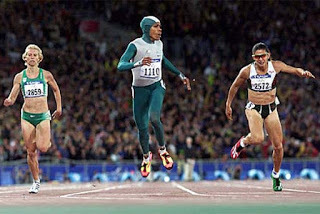
Freeman ran a mighty race in Gothenburg to finish fourth in the 400m final and won a bronze medal in the 4x400m relay team. This was followed by wins in the IAAF Grand Prix circuit in Brussels. These performances secured Freeman the Number Two world ranking in 1995.
Freeman ran the race of her life at the 1996 Olympic Games held in Atlanta, becoming the sixth fastest woman ever over 400m, running a Commonwealth record and winning the silver medal behind Perec in perhaps the greatest one lap race of all time.
Freeman then firmly set her sights on the Sydney 2000 Olympic Games, where she won Gold in the 400m race retaining her title as the "Queen of the Track!"

Clancy's comment: I will always recall her win at the Sydney 2000 Olympics.
I'm ...


Published on November 24, 2016 13:12
November 23, 2016
24 November 2016 - FACTS ABOUT THE PEACE CORPS

FACTS ABOUT THE PEACE CORPS
G'day folks,
On September 22, 1961, seven months after an executive order from President John F. Kennedy, the U.S. Congress authorized legislation officially establishing the Peace Corps. Founded with the goals of promoting “world peace and friendship” abroad, the organization has since sent over 220,000 volunteers to 140 countries in the developing world, where they have assisted with everything from education and agricultural projects to HIV awareness and disaster relief. Here are eight surprising facts about one of the United States’ most iconic service programs.
While President John F. Kennedy took the lead in establishing the Peace Corps, he wasn’t the first politician to propose an international service organization. One of the idea’s earliest champions was Wisconsin Representative Henry Reuss, who pushed for the creation of a “Point Four Youth Corps” in the late 1950s. In June 1960, meanwhile, Minnesota Senator Hubert Humphrey coined the name “Peace Corps” when he introduced a bill advocating for a program to send “young men to assist the peoples of the underdeveloped areas of the world to combat poverty, disease, illiteracy and hunger.” Neither of the earlier proposals gained traction, but they played a key role in inspiring Kennedy and his staff to begin researching the idea during the 1960 presidential campaign.

At 2 a.m. on October 14, 1960, Senator John F. Kennedy arrived at the University of Michigan near the end of his presidential campaign. The candidate had planned on heading straight to bed, but when he noticed that a crowd of 10,000 students had gathered to greet him, he stepped behind a microphone and gave an unscripted speech. “How many of you who are going to be doctors, are willing to spend your days in Ghana?” he asked. “Technicians or engineers, how many of you are willing to work in the Foreign Service and spend your lives traveling around the world?” Kennedy wouldn’t officially call for a “peace corps of talented young men and women” until two weeks later, but his late-night challenge is now cited as the program’s founding moment. The University of Michigan in Ann Arbor even has a plaque on its campus marking the spot where Kennedy “first defined the Peace Corps.”
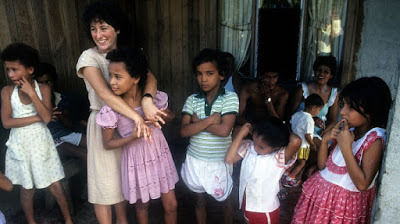
By the time he was inaugurated as president, Kennedy’s Peace Corps had become one of the most talked-about aspects of his platform. University students circulated petitions and pledges to serve, and more than 25,000 letters arrived from prospective volunteers. Faced with such an overwhelming response, Kennedy placed his brother-in-law, Sargent Shriver, in charge of a special task force to create the new organization. Shriver and a brain trust of academics issued a report on the program in just a few weeks, and Kennedy officially established the Peace Corps by executive order on March 1, 1961. Work continued at a frantic pace over the next few months as Shriver—the organization’s first director—interviewed applicants and enlisted the participation of foreign governments. By August 30, little more than seven months after Kennedy’s inauguration, the first contingent of 51 Peace Corps volunteers had already arrived in Accra, Ghana, to serve as teachers.

President Kennedy considered the Peace Corps a Cold War tool to bolster the United States’ reputation and counter the Soviet Union’s influence abroad, but many of his fellow lawmakers were skeptical of what was mockingly called the “Kiddie Corps.” Richard Nixon branded the program a “cult of escapism” and argued that it catered to young men looking to skip out on the military draft. Former President Dwight D. Eisenhower, meanwhile, called it a “juvenile experiment” and suggested that its members should be sent to the moon. Despite the criticisms, the Peace Corps remained popular among college students and young people during its early days. By its fifth anniversary in 1966, it boasted over 15,000 volunteers serving two-year terms in 46 countries.
Since it was founded during the height of the Cold War, the Peace Corps was often subject to speculation that it was a front organization for the Central Intelligence Agency. The Kennedy administration ordered the CIA not to meddle in the Peace Corps’ affairs, but many host countries still believed rumors and Soviet propaganda that the program’s volunteers were undercover spies. In the interest of avoiding any connection to the espionage community, the Peace Corps has always maintained a blanket ban on former CIA employees becoming volunteers. Former members of other intelligence outfits are allowed to serve in some cases, but only after a 10-year waiting period.

Peace Corps volunteers often face extreme conditions while working in remote and undeveloped parts of the world. The organization suffered its first casualties in 1962, when volunteers Larry Radley and David Crozier were killed in a plane crash in Colombia. Since then, around 300 other volunteers have died on duty from car crashes, accidents, sickness, drowning, animal attacks and violent crime. While certain hazards are unavoidable, the Peace Corps often evacuates volunteers from unstable or potentially dangerous parts of the world. In recent years, security concerns have seen it suspend operations in Kazakhstan, Niger, Honduras, Jordan and El Salvador.
The Peace Corps is designed to work in the developing world, but a lone exception to its overseas mandate came in 2005, when Hurricanes Katrina and Rita ravaged the U.S. Gulf Coast. In the wake of the storms, the Peace Corps dispatched nearly 300 veteran volunteers to Louisiana to distribute food, search for survivors and clear debris. The relief efforts marked the first time in Peace Corps history that the organization carried out operations on home soil. Information on fallen Peace Corps volunteers and staff can be found at fpcv.org

The average age of Peace Corps volunteers is 28, but the organization has no rule preventing the middle-aged or the elderly from serving. President Jimmy Carter’s mother Lillian famously joined the Peace Corps at age 68, and roughly 7 percent of all current volunteers are over age 50. As of 2016, the Peace Corps’ oldest active member was Alice Carter, an 87-year-old Boston grandmother serving in Morocco.

Clancy's comment: It would be ideal to be introduced in Australia. Or, maybe boot camp for some of our young offenders. I'm not surprised that most members are over 50 years-of-age. The modern generations don't seem to be willing to join any volunteer organisations.
I'm ...

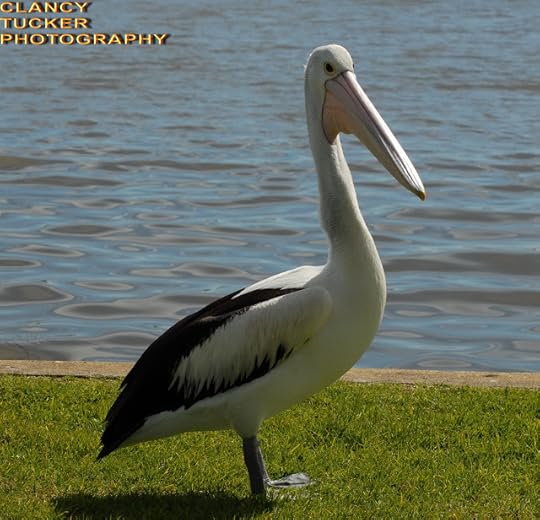
Published on November 23, 2016 14:24
November 22, 2016
23 November 2016 - WEIRD STUFF

WEIRD STUFF
G'day folks,
Check out these odd and weird things from around the world.











[image error]







Clancy's comment: Amazing, eh?
I'm ...
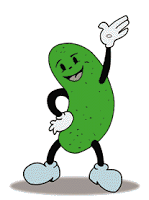
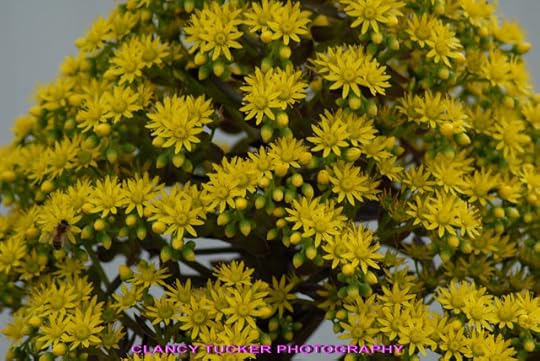
Published on November 22, 2016 12:23
November 21, 2016
22 November 2016 - ALBERT NAMATJIRA
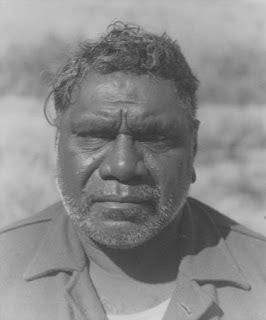
ALBERT NAMATJIRA
G'day folks,
Welcome to the life of one of Australia's most famous artists. Albert Namatjira, born Elea Namatjira, was a Western Arrernte-speaking Aboriginal artist from the MacDonnell Ranges in Central Australia. As a kid, I recall many of his works depicted on chocolate boxes.
Albert (Elea) Namatjira (1902-1959), artist, was born on 28 July 1902 at Hermannsburg (Ntaria), Northern Territory, son of Namatjira and his wife Ljukuta. Elea belonged to the western group of the Arrernte people. In 1905 the family was received into the Lutheran Church: Elea (who was given the name Albert) and his father (who took the name Jonathan) were baptized, and his mother was blessed (as Emilie). Albert attended the Hermannsburg mission school. In accordance with the practice of the missions, he lived separately from his parents in a boys' dormitory. At 13 he spent six months in the bush and underwent initiation. He left the mission again at the age of 18 and married Ilkalita, a Kukatja woman. Eight of their children were to survive infancy: five sons—Enos, Oscar, Ewald, Keith and Maurice—and three daughters—Maisie, Hazel and Martha. The family shifted to Hermannsburg in 1923 and Ilkalita was christened Rubina.

In his boyhood Albert sketched 'scenes and incidents around him . . . the cattle yard, the stockmen with their horses, and the hunters after game'. He later made artefacts such as boomerangs and woomeras. Encouraged by the mission authorities, he began to produce mulga-wood plaques with poker-worked designs. Meanwhile, he worked as a blacksmith, carpenter, stockman and cameleer—at the mission for rations and on neighbouring stations for wages. The spectacular scenery of Central Australia, then entering the national consciousness as a symbol of Australian identity, attracted artists to Hermannsburg, among them Rex Battarbee and John Gardner. During their second visit in 1934 they held an exhibition for an Aboriginal audience. The Arrernte were familiar with illustrations of biblical scenes, but none had seen landscapes depicting their own surroundings.
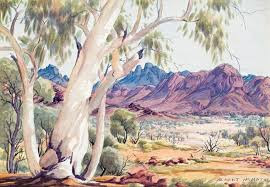
Motivated by a deep attachment to his country and the possibility of a vocation that offered financial return, Namatjira expressed an interest in learning to paint. In 1936 he accompanied Battarbee as a cameleer on two month-long excursions in and around the Macdonnell Ranges. Battarbee was impressed by his evident talent. In the following year Pastor Friedrich Albrecht, the superintendent of Hermannsburg, displayed ten of Namatjira's watercolours at a Lutheran conference held at Nuriootpa, South Australia. Battarbee included another three of his water-colours in an exhibition with the Royal South Australian Society of Arts, Adelaide. In 1938 the two men went on an expedition, during which Battarbee taught him photography. Later that year Namatjira held his first solo exhibition at the Fine Art Society Gallery, Melbourne. With Battarbee's assistance as teacher, dealer and mentor, a school of artists developed around Namatjira.
Although Namatjira is best known for his water-colour landscapes of the Macdonnell Ranges and the nearby region, earlier in his career his imagery had included tjuringa designs, biblical themes and figurative subjects. He also produced carved and painted artefacts, and briefly painted on bean-wood panels. Superficially, his paintings give the appearance of conventional European landscapes, but Namatjira painted with 'country in mind' and continually returned to sites imbued with ancestral associations. The repetition, detailed patterning and high horizons—so characteristic of his work—blended Aboriginal and European modes of depiction.
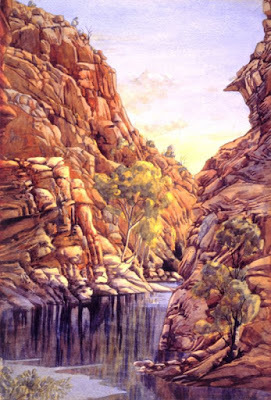
Namatjira's initiatives won national and international acclaim. As the first prominent Aboriginal artist to work in a modern idiom, he was widely regarded as a representative of assimilation. In 1944 he was included in Who's Who in Australia. He was awarded Queen Elizabeth II's coronation medal (1953), presented to the Queen in Canberra (1954) and elected an honorary member of the Royal Art Society of New South Wales (1955). His quiet and dignified presence belied the underlying tensions in his life.
With fame came controversy. Namatjira's brilliant career highlighted the gap between the rhetoric and reality of assimilation policies. He encountered an ambiguous response from the art world. Some criticized his water-colour landscapes as derivative and conventional, others viewed them as evidence of acculturation and a loss of tribal traditions. Tensions arose between Namatjira and the Aranda Arts Council (chaired by Battarbee) when the council tried to maintain control over the quality and quantity of his work. Namatjira also encountered racial discrimination. He was refused a grazing licence in 1949-50 and prevented in 1951 from building a house on land he bought at Alice Springs. Seeking further means of support for his family, he discovered copper deposits at Areyonga Reserve, but they proved commercially unviable. By the early 1950s he lived independently of the mission in a fringe camp at Morris Soak on the outskirts of Alice Springs.
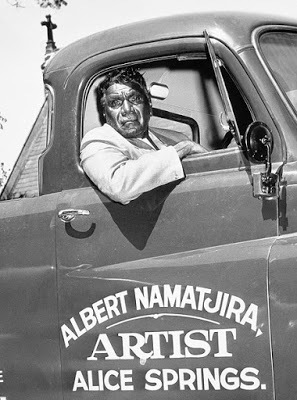
The citizenship granted to Namatjira in 1957 led to further anomalies. Exempted from the restrictions imposed on other 'full-blooded' Aborigines, he had access to alcohol which he shared with members of his family in accordance with Aboriginal custom. In 1958 he was charged with supplying alcohol to the artist Henoch Raberaba and sentenced to six months imprisonment with labour. Following a public outcry and two appeals, the sentence was reduced to three months. Namatjira finally served two months of 'open' detention at the Papunya settlement in March-May 1959. He died of hypertensive heart failure on 8 August that year at Alice Springs Hospital and was buried with Lutheran forms in the local cemetery. His wife, five sons and one of his daughters survived him.

For a time Namatjira's name drifted into obscurity, his achievements largely eclipsed by the 'dot painting' style developed at Papunya in the 1970s. Recent re-evaluations recognize his influence on Aboriginal artists in Central Australia and elsewhere. In 1994 members of the Hermannsburg Potters, led by his grand-daughter Elaine, acknowledged Namatjira's legacy by producing a terracotta mural for the headstone of his grave. The work is a landscape combining three sites in the Macdonnell Ranges which were the subjects of his paintings.
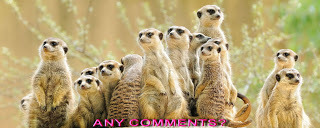
Clancy's comment: A clever man. However, as an Aboriginal born in those times, life wouldn't have been easy as an artist.
I'm ...

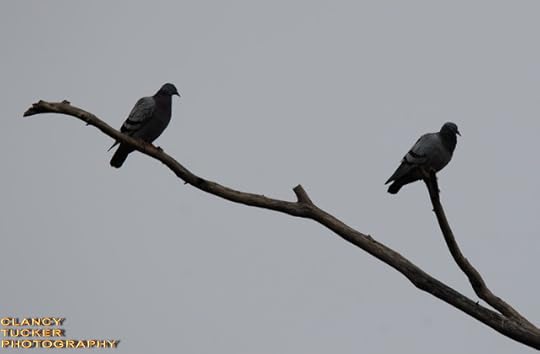
Published on November 21, 2016 12:48
November 20, 2016
21 November 2016 - GREAT QUOTES

GREAT QUOTES
G'day folks,
Always good to stop and reflect on what's important. Here are a few that might do just that.
[image error]
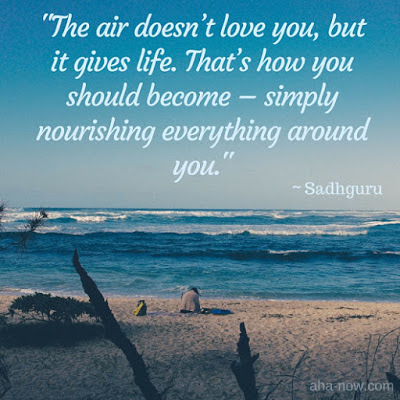
[image error]

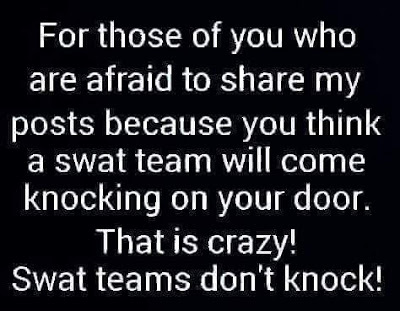


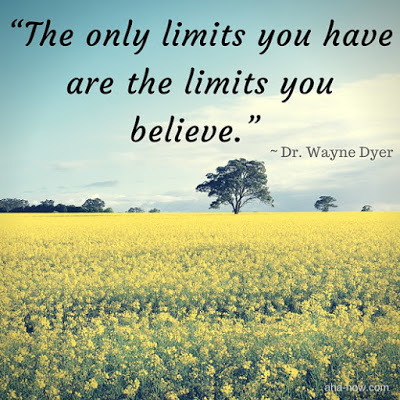

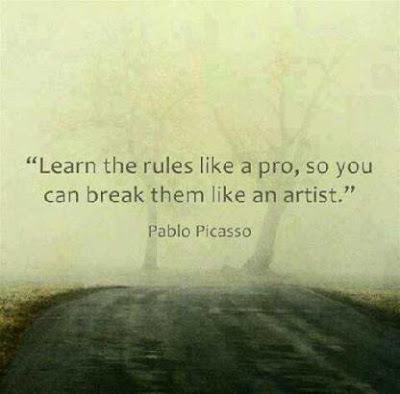


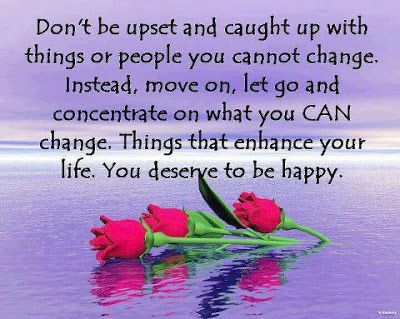



Clancy's comment: Mm ... A few good ones here.
I'm ...
[image error]

Published on November 20, 2016 13:55
November 19, 2016
20 November 2016 - TONY BENNETT
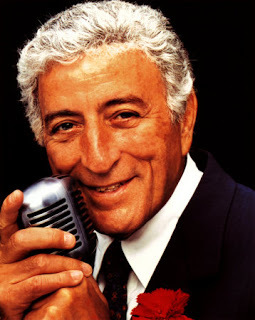
TONY BENNETT
G'day folks,
Anthony Dominick Benedetto, known professionally as Tony Bennett, is an American singer of traditional pop standards, big band, show tunes, and jazz.
Tony Bennett is the last of the great crooners. Born into an Italian family in the ethnic enclave of Astoria, New York, the young Tony Benedetto got his first look at show business in the days of vaudeville, where his uncle was a tap dancer. Though his family endured the Great Depression in bitter poverty, his parents instilled in him a love for art, literature, and music.
Tony began his music career at a young age, working as a singing waiter in nearby Italian restaurants. Though he studied music formally at New York’s School of Industrial Art, hard times forced him to drop out and pursue paying work at 16. Even as he worked a series of menial day jobs, Benedetto continued to gig at night right up until being drafted into the U.S. Army in 1944. Benedetto saw heavy combat as an infantryman in France and Germany toward the end of the war and even took part in the liberation of a Nazi Concentration Camp.

In spite of the nightmarish experience he endured on the battlefront, the G.I. Bill made it possible for Tony to study at the American Theatre Wing upon his discharge in 1946. Though Tony managed a few recordings without registering on the pop radar, he did come to the attention of the rising Broadway star Pearl Bailey. She invited Tony to open for her. He did so and, as fortune would have it, performed to a house that included a summarily impressed Bob Hope.
Hope dubbed the young singer Tony Bennett and invited him on tour. The following year, he signed to Columbia Records and launched into a decade of dramatic success. With hits like “Boulevard of Broken Dreams,” “Blue Velvet,” and “Rags to Riches,” Bennett established himself as a suave and sophisticated counterpoint to Sinatra’s streetwise tough guy.
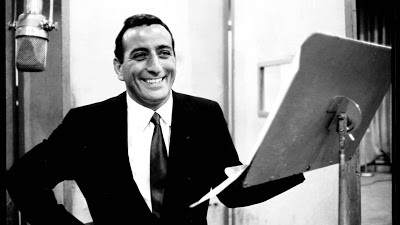
The result was something of a cultural phenomenon. Before there was Elvis, before the Beatles, Tony Bennett’s appearances in the pre–rock and roll era were known to attract gaggles of shrieking female fans.
In the late ‘50s, Bennett also earned musical credibility beyond the Billboard landscape, recording with leading jazz masters like Herbie Mann, Art Blakey, and Chico Hamilton. This credibility may also account for his ability to remain relevant into the early ‘60s, even after the first surge of rock and roll. Indeed, 1962 would be a landmark year for Bennett, who headlined a star-studded bill at Carnegie Hall, performed at the opening broadcast of Johnny Carson’s Tonight Show, and released what remains his signature song, the breezy and perfectly evocative “I Left My Heart in San Francisco.”
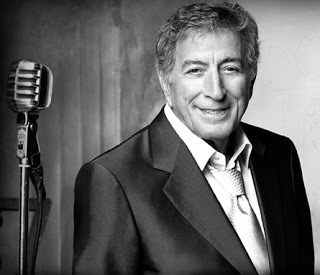
In the ‘80s and ‘90s, Tony Bennett enriched his legacy by successfully courting the MTV audience. Appearances on the Late Show With David Letterman, the Simpsons, and MTV Unpluggedsuddenly made Tony Bennett hip again.
It also garnered a resurgence of attention, acclaim, and recognition for the aging star. Indeed, the last 20 years have been something of a victory lap for Bennett, who continues not only to perform into his 80s but to collect all manner of accolades. He is the winner of an astonishing 17 Grammy Awards, two Emmys, and a star on the Hollywood Walk of Fame. He also continues to surprise audiences by collaborating with major contemporary artists like K.D. Lang, Christina Aguilera, and Lady Gaga.
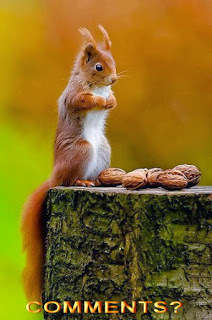
Clancy's comment: This man always had a silky voice.
I'm ...

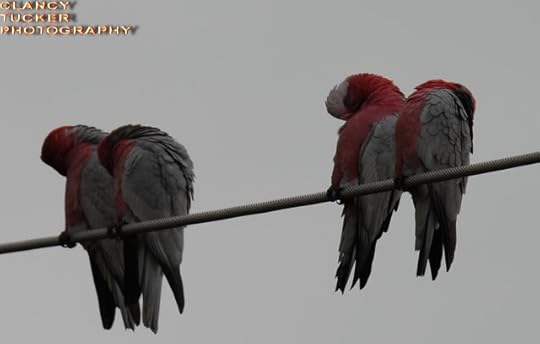
Published on November 19, 2016 14:48
November 18, 2016
19 November 2016 - Dr. Judith O'Malley-Ford - BOOK RELEASE
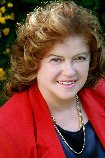
Dr. Judith O'Malley- Ford- Book Release -
G'day folks,
I'm pleased to be part of a blog tour for a very good friend of mine who has just released a book on a very important subject - PROSTATE. Judith is a very talented GP, but also a fabulous artist and author.
The Book: The Secret Stalker of the Prostate by Judith O'Malley-Ford
Synopsis: This book has the potential to save many lives. Every question regarding anatomy, disease processes, decision making procedures for the treatment and considerations of the side effects, psycho-social effects and the impact on relationships, are concisely covered - all in layman terms.
For those men who are in the process of taking that difficult step of presenting prostate problems to their doctors, including those unfortunate enough to be facing investigation for prostate cancer, this book is for you.
Today we start our interview with the author, Dr Judith O'Malley - Ford to find out a little more about her and her book. Follow the promotional tour to learn a little more each day.

1. Describe your book in five words or less.
Prostate cancer in a nutshell.2. Why did you choose to write this book?
I felt there was a need to provide information in a more readable way for men and women, and I identified a gap in the information currently available.
3. Is there a message in your book that you want readers to grasp?
The message is that men need to start prostate checks around 40 – 50 years of age, earlier in this age range if there is a family history of the disease. There is currently no formal prostate screening program in this country, and the current test, the PSA test, does not clearly identify early prostate cancer. There needs to be another more accurate test devised.
4. Did you have to do much research for this book?
The book is heavily researched, with the assistance of a project officer to access the original research material, and informal feedback from men who have had prostate cancer.
5. Is there something that sets this book apart from others?
This book looks at the current position on prostate cancer, and looks towards the future in dealing with this disease. It also makes a connection between prostate cancer and breast cancer in the respective genders.

The book is available at all book stores. If it is not in stock yet, ask them to order it for you. It is also available from the Morris Publishing Australia's website: http://www.morrispublishingaustralia.com/the-secret-stalker-of-the-prostate.html And on Amazon as an eBook.
Promotional tour dates and addresses: 19th November https://clancytucker.blogspot.com.au 20th November http://karlenepetitt.blogspot.com 21st November http://www.morrispublishingaustralia.com/news-update-blog 22nd November http://peterfrederick.blogspot.com.au/ 23rd November https://www.facebook.com/AuthorJohnHickman 24th November https://www.facebook.com/cheryl.hampton.503?fref=ts

Clancy's comment: This book should be read by every adult male. Here is what I wrote in my review for this book. It is included within the book:
Doctor Judith O’Malley-Ford, MB BS, MPH, JP (Q), FRACGP, has tackled a problem that has quickly become a major scourge of the modern male – prostate cancer. Her knowledge of prostate issues is outstanding, and her dedicated work on this subject should be suitably recognised globally. A few close friends of mine have died from this condition, and one is currently enduring the battle.
Hopefully, this book will provide some background, and certainly expose this subject to the level it should be in modern society. Sadly, many men avoid early detection, and I sincerely hope that all women in every family will encourage their men to be proactive.
Dr. Judith’s personal quest to improve men’s health, has been inspired by her father’s experience at the hands of this very disease. Judith is a highly qualified GP with substantial clinical experience, a person of great intellect, and a fine writer and painter. I sincerely hope this book finds its way to all the right places where it can do some good.
Knowing the astute, sharp and analytical mind of the author, I can only encourage and promote the distribution of this informative piece of work by a caring and dedicated Australian GP. Love ya work, Dr. Judith.
Clancy Tucker
Award-winning author and photographer
I'm ...

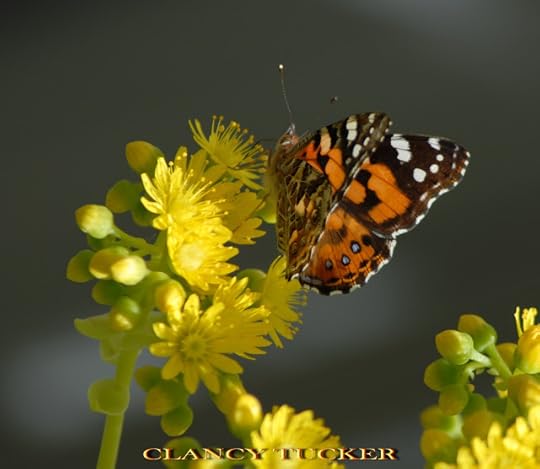
Published on November 18, 2016 13:30
November 17, 2016
18 November 2016 - BILL CONDON - Guest Australian Author
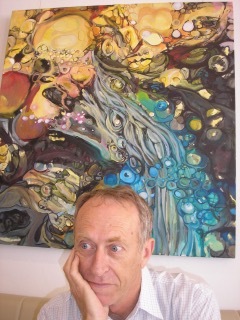
BILL CONDON- Guest Australian Author -
G'day folks,
I'm pleased to introduce a very successful Australian author who has a great sense of humour. Here is a brief resume' of Bill's sharp humour ...
Bill Condon was born, which is always a good start.
He became a children's writer after failing the entrance exam for bottlewashing...
Bill Condon was born in 1949 and was still alive when he wrote this. He lives with his wife Dianne (Di) Bates, in the seaside town of Woonona, on the south coast of New South Wales, Australia.
He left school at the first chance he got and worked in an assortment of jobs that did not require much in the way of qualifications.
He mowed lawns, cut down trees, delivered parcels, trained greyhounds, worked in a milk factory, drove a forklift truck, and briefly, before he went broke, was a professional punter. All that time he longed to be a writer, the only vocation he felt an affinity for.
A chance meeting with Larry Rivera, the editor of a local weekly newspaper, led Bill into a career as a journalist. He was given a one-day trial at the paper, to fill in for someone who was sick, and stayed for ten years. (There is almost no truth to the rumour that he murdered the person who was sick.) Throughout those years Bill was also writing for children, following the example of his wife Di, who is a well known children's author.
About ten years ago Bill left journalism to devote himself full-time to writing for children. When not writing, Bill plays tennis, snooker, and Scrabble, but hardly ever at the same time. His dream is to receive a wildcard invitation to play tennis at Wimbledon - if nothing else, his knees would provide great comic relief for the spectators.
Welcome, Bill ....
1. TELL US A LITTLE ABOUT YOURSELF AND YOUR WRITING JOURNEY.
I had my first book published in the early 80s when I was just a boy of 30 something. Now I’m just a boy of 67, but I’m still hanging in there. I live on the south coast of NSW with my wife Di (Dianne Bates) and spend my days writing – or to be more accurate – trying to write. I’ve written for young people of all ages, and across many genres. In the words of AB Facey, I’ve had a fortunate life.
2. WHEN AND HOW DID YOU BECOME A WRITER?
I stumbled into writing, probably because at school it was the only thing I showed any aptitude for. When I was about 14 or 15 I wrote an essay that a teacher singled out for praise – a rare thing for me in those days – and I think that’s what got me dreaming of one day becoming a writer. My writing apprenticeship was simply living and earning a crust, mowing lawns and working in factories, meeting people and hearing about their lives, all the time subconsciously ‘growing’ my own stories, which I’ve been plundering ever since.
3. WHAT TYPE OF PREPARATION DO YOU DO FOR A MANUSCRIPT? DO YOU PLAN EVERYTHING FIRST OR JUST SHOOT FROM THE HIP?
I’m hip-shooter from way back. Planning would make things a lot easier, and I’m sure I’d save a great deal of time, but I doubt I’ll change my method now. The only planning I do is thinking, usually during morning walks. This is a very long and drawn-out process, and it usually leads to nothing. But once in a while an idea takes hold, and I run with it.
4. WHAT DO YOU ENJOY MOST ABOUT BEING A WRITER?
Dorothy Parker said it best: ‘Hate writing. Love having written’. That doesn’t quite pertain to me because I don’t hate it at all. But I do find it very hard, and it’s so easy to give up, or not even try. But when I do try and it works – and I think this goes for most writers – there is nothing better.
5. WHAT WERE YOU IN A PAST LIFE, BEFORE YOU BECAME A WRITER?
I did lots of manual work, including mowing lawns, cutting down trees, pretending to be a landscape gardener, and had stints in milk and ice cream factories, before fluking a job as a journalist for a local paper. I filled in for a day for someone who was sick, and ended up staying ten years. Since the early 90s I’ve been a full-time freelance writer.

6. WHAT IS YOUR GREATEST WRITING ACHIEVEMENT?
Every book that I’m able to write is a big thrill and gives me a sense of achievement, but I think highest on the list would be winning the Prime Minister’s Literary Award for Young Adult Fiction in 2010.
7. WHAT ARE YOU WORKING ON AT THE MOMENT?
I’m in between books. I recently finished a novel so my brain has decided to go on holiday. Hopefully, one day it will come back.
8. WHAT INSPIRES YOU?
Many things. Today I saw a young man in a wheelchair struggling to push himself up a steep grade. I told him it must be a battle to make it up hills and he just shrugged and said, ‘Yeah, but it’s good for my arms and my heart.’ I found him and his attitude inspiring. At the start of the year my oldest friend died. I’d known him since schooldays. Whenever I feel lazy now, or fed up in general, I think of how grateful John would be to have one more day to live and achieve. That inspires me to stop complaining and get to work.
9. WHAT GENRE DO YOU WRITE?
Young adults and junior novels for children. I’ve also written more than 100 plays for kids, plus several collections of poems, and I’ve had a few non-fiction books published.

10. DO YOU HAVE ANY TIPS FOR NEW WRITERS?
Believe in yourself, because if you don’t no one else is likely to. With most things in life, the more you you do something, the better you’ll be at it. I think this certainly applies to writing. So hard work and lots of it. Often I’m very reluctant to face the horror of the blank page. To overcome this I set myself a writing time limit of one hour. That isn’t too daunting so I can usually manage it. Surprisingly, very often when the hour is up I’ve become engaged in a piece of writing and I don’t want to stop.
11. DO YOU SUFFER FROM WRITER’S BLOCK?
To be more specific, I suffer from fear of trying to write and not being able to, which often blocks me. There is a four-year gap between my latest two books. When the writing got hard I stalled and told myself that I was too old to write anything decent. Finally, when I overcame the block, I realised that writing has always been hard for me. I just had to knuckle down and do it.
12. DO YOU HAVE A PREFERRED WRITING SCHEDULE?
I write every day from morning till about 5 pm. I’m also frequently at my desk in the middle of the night. That makes me sound like a workaholic, but I write extremely slowly, so I don’t accomplish a lot during all those hours. The exception to this is when I’m on a roll with something – which is rare – then the writing comes easily and I lose track of time.
13. WHAT IS YOUR GREATEST JOY IN WRITING?
Finding the right voice for a character. Writing a good scene. Most of all, typing The End.
14. WHO IS YOUR FAVOURITE AUTHOR AND WHY?
That’s too hard. Australians are spoilt for choice. We have so many terrific writers.
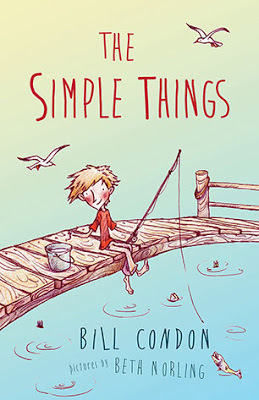
15. WRITERS ARE SOMETIMES INFLUENCED BY THINGS THAT HAPPEN IN THEIR OWN LIVES. ARE YOU?
Very much. All my stories are in some way autobiographical. My problem now is that I’ve written so much that I’m running out of life to steal from. If I can’t think of something soon I might have to start using my imagination!
16. DID YOU HAVE YOUR BOOK / BOOKS PROFESSIONALLY EDITED BEFORE PUBLICATION?
Yes. I’ve published with Allen & Unwin, Random House, UQP, About Kid’s Books, etc. They won’t release a book that hasn’t been professionally edited.
17. WHAT ARE YOUR PLANS FOR THE FUTURE?
Keep writing for as long as I can.
18. WHAT ARE YOUR VIEWS ON BOOK TRAILERS? DO THEY SELL BOOKS?
I’ve never had a book trailer. (I wouldn’t be able to park it.) I doubt I ever will have one, so I’m not the person to ask.
19. DOES THE PUBLISHING INDUSTRY FRUSTRATE YOU?
Not at all. It’s been very good to me so I have no complaints. I should also say that everyone I’ve had dealings with over the years has been kind and helpful.
20. DID YOU EVER THINK OF QUITTING?
No. As I said earlier, I’m not much good at anything else.
21. HOW WOULD YOU DEFINE ‘SUCCESS’ AS A WRITER?
Another hard question, Clancy. Success has different meanings to various people. I’d say that basically if you write something to the best of your ability and you’re happy with the result – whether it’s published or not – that’s a success.
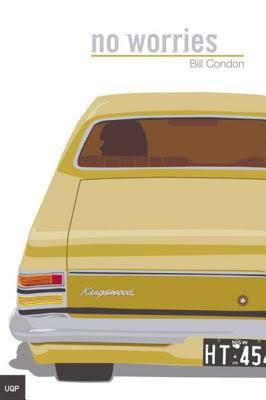
22. WHAT SHOULD READERS WALK AWAY FROM YOUR BOOKS KNOWING? HOW SHOULD THEY FEEL?
Hopefully they should know the characters and empathise with them. And I always cross my fingers that they don’t hate the author.
23. WOULD YOU LIKE TO HAVE YOUR BOOKS MADE INTO MOVIES? EVER WRITTEN A SCREENPLAY?
No to both.
24. HOW MUCH THOUGHT GOES INTO DESIGNING A BOOK COVER?
Quite a lot I imagine, but I don’t get involved in that side of things. I leave it to the publisher. They always send me the cover for my approval before they go ahead, and usually it’s excellent
25. WHAT’S YOUR ULTIMATE DREAM?
I’ve already had more dreams fulfilled than one person should be allowed.
26. WRITING IS ONE THING. WHAT ABOUT MARKETING YOU, YOUR BOOKS AND YOUR BRAND? ANY THOUGHTS?
I know that more and more writers are supposed to be marketers of their books. I try to avoid it as much as possible and prefer to let the book speak for itself. However, I have to admit that some Net presence (on amazing sites such as yours) is a very good way of getting the word around about a new publication.
27. ARE YOUR BOOKS SELF-PUBLISHED?
No.
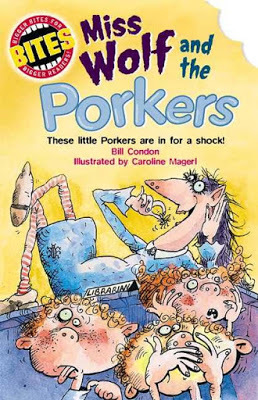
28. WHAT PISSES YOU OFF MOST?
The way Andrew O’Keefe waves his hands around on The Chase. And I hate Australians (like Andrew) who say ‘Listen up!’ Grr! This isn’t America – yet. I also hate the way the newsreader Michael Ferguson refers to the weatherman on Ch 7 as ‘Brownie’. And of course the weatherman calls him ‘Fergo’. Double grr! Apart from a few little things like that, everything is sweet.
29. TELL US ABOUT YOUR LATEST BOOK. WHAT’S IT ABOUT?
It’s a junior novel called All Of Us Together which is set in Australia at the start of the Great Depression of the 1930s. Although it sounds like it would be knee-deep in history, it’s not. It’s a simple story about a family and what happens to them when the Depression hits.
Apart from Mum and Dad there are two girls, Lydia and Adelaide, and their slightly older brother, Daniel. And of course they have a much-loved dog. (All my books have dogs.) At the start of the story their dad goes off in search of work, because there’s none near where he lives. Apparently this was commonplace during the Depression. It was this idea that first attracted me to the story. I wondered what would happen to the kids and to their mother, with Dad away for a long time.
In my story Daniel takes it on himself to try to be the man of the house, no easy task for a twelve-year-old. As you might expect, he runs into a few problems along the way. But through all their travails the family stick together and support each other. There are parts where it’s funny, and parts where it’s sad, which is pretty much what real life is like.

30. ANYTHING YOU’D LIKE TO ADD?
Just a big thank you for letting me visit your site.
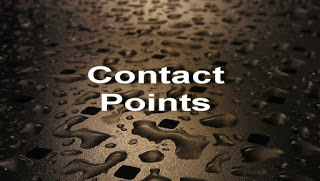
All of Us Together is available from About Kids Books:
http://www.aboutkidsbooks.com/payment-methods
... or from any children's bookstore.
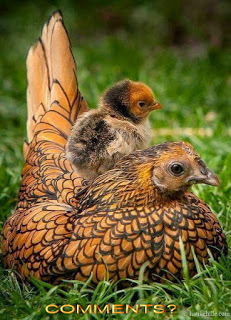
Clancy's comment: Great author, top sense of humour, and I highly recommend any of Bill's books. I'm about to read his latest book, ALL OF US TOGETHER, and am looking forward to it. Why, because it covers a very important period in Australia's history - THE GREAT DEPRESSION. Grab a copy and see for yourself. Love ya work, Bill!
I'm ...
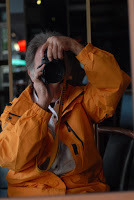
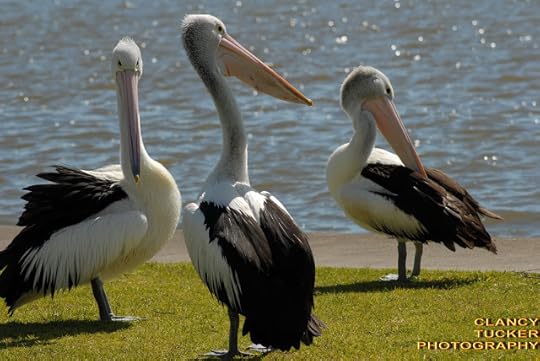
Published on November 17, 2016 13:39
November 15, 2016
16 November 2016 - MARILYN MONROE
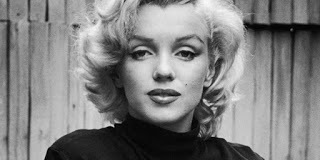
MARILYN MONROE
G'day folks,
Marilyn Monroe was an American actress and model. Famous for playing "dumb blonde" characters, she became one of the most popular sex symbols of the 1950s, emblematic of the era's attitudes towards sexuality.
“I am good, but not an angel. I do sin, but I am not the devil. I am just a small girl in a big world trying to find someone to love.”
Marilyn Monroe
Monroe was born, Norma Jeane Mortenson, in June 1926. Her father was unknown and she was baptised as Norma Jeane Baker; she spent many years in foster homes because of her family situation.
Monroe married Jimmy Dougherty, in 1942. When he left to the South Pacific to fight in the Second world War, she joined a local munitions factory in Burbank, California. It was here that Marilyn got her first big break.
Photographer David Conover, was covering the munitions factory to show women at work. He was struck by the beauty and photogenic nature of Norma, and he used her in many of her shots. This enabled her to start a career as a model and she was soon featured on the front of many magazine covers.
1946 was a pivotal year for Marilyn, she divorced her young husband and changed her name from the boring Norma Baker to the more glamorous Marilyn Monroe (after her grandma). She took drama lessons and got her first movie contract with Twentieth Century Fox. Her first few films were low key, but, it gained her more prominent roles in films such as All About Eve, Niagara and later Gentleman Prefer Blondes and How To Marry A Millionaire.
By now these film roles had thrust her into the global limelight. She was an iconic figure of Hollywood glamour and fashion. She was an epitome of sensuality, beauty and effervescence and was naturally photogenic. She often found the trappings of fame difficult to deal with.
When you’re famous you kind of run into human nature in a raw kind of way. It stirs up envy, fame does. People you run into feel that, well, who does she think she is, Marilyn Monroe? They feel fame gives them some kind of privilege to walk up to you and say anything to you, of any kind of nature — and it won’t hurt your feelings — like it’s happening to your clothes not you.
– Marilyn Monroe (A Life of the Actress, 1993)
In 1954, she married baseball star Joe DiMaggio, a friend of over two years. They were later to divorce, but they remained close friends.
In her later career, she tried to move beyond the ‘blonde bombshell’ typecasting and set up her own movie production. She was awarded a golden globe award for her role in ‘Some Like It Hot‘
Tragically, she died early from an overdose of barbiturates in 1962 aged just 36.
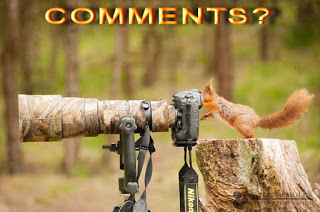
Clancy's comment: Mm ... Another young woman who died too early.
I'm ...
[image error]

Published on November 15, 2016 13:36



